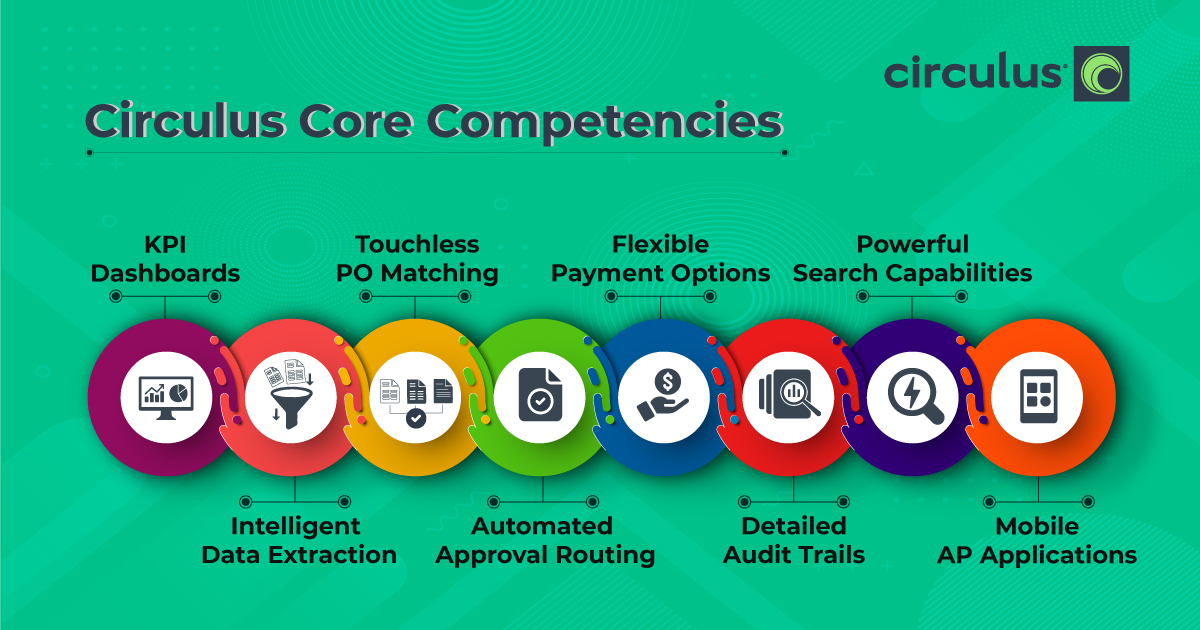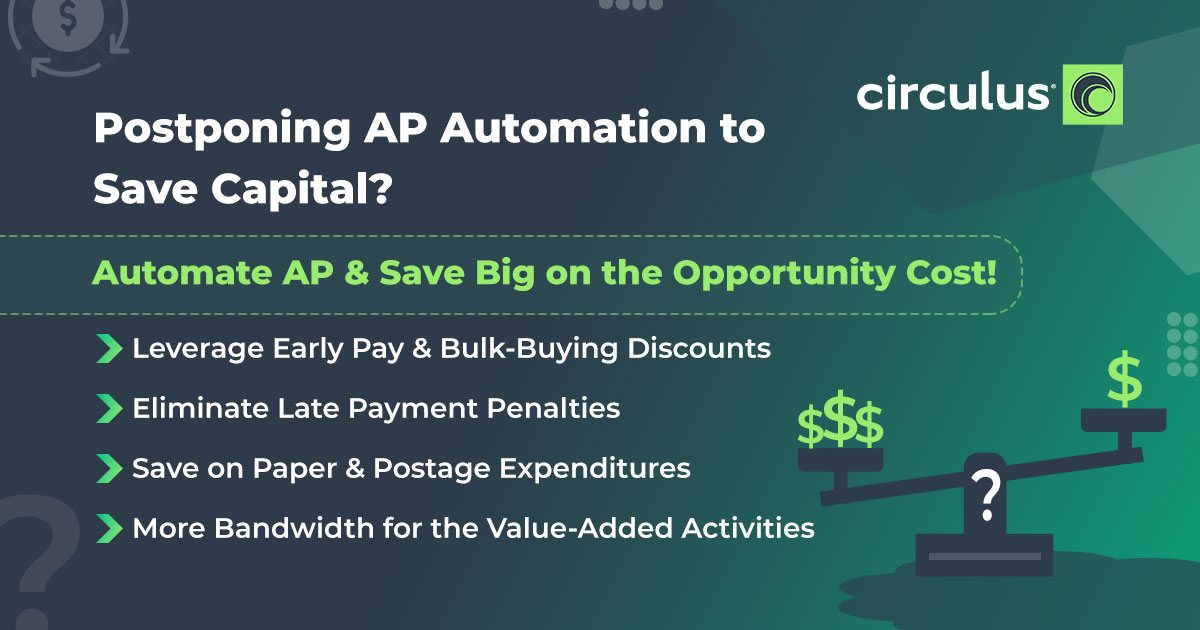In an increasingly competitive marketplace, companies are under constant pressure to improve operations at minimal cost while maintaining a high level of customer service. While Accounts Payable (AP) departments have often been viewed as a back-office function, companies are starting to recognize the strategic value AP teams have to offer as well as the benefits that come from addressing common AP challenges.
Introducing AP automation software into your company is a way to both address issues such as error-prone and slow manual invoice processing, inaccurate reporting, and fraud, as well as free up staff members’ time so they can take on strategic projects and analytical work that supports organizational efficiency and growth.
However, making the switch to an AP automation platform can feel like a dramatic shift, and many companies are resistant to change. So, how can you build and sell a business case for AP automation?
Below are some key steps that will help you develop a successful pitch for bringing AP automation to your organization:
Frame the Case for Change
Change can be difficult for people, and, as leadership guru Simon Sinek would advise, the best place to start is with the question, “Why? Why should we do this? And why now?” Answering these crucial questions can help define your company’s needs and develop your case for change.
A good starting point is gathering information within your industry on current and best practices. Understanding the trends and standard benchmarks will help you assess realistic targets and organizational goals.
Next, you’ll also want to pinpoint and define issues and concerns in your AP department’s current processes and identify where you may be falling short compared to the industry data and benchmarks you gathered. This will help you define your company’s areas of need and guide your research on the appropriate solutions to those problems.
Do Your Research
Once you have a clear understanding of your scope of needs, look up a few case studies that demonstrate value added to companies with demographics similar to your own. Case studies provide real-world examples of how companies have been impacted by implementing automation within their AP processes. You don’t need many of these; find a few studies from companies within your industry that are similar to your size and structure.
It’s also important to understand your own company data. You’ll need to gather current AP metrics by calculating your cost-per-invoice and time spent on day-to-day tasks. This way, you have a clear understanding of your AP department costs. Although this data can be difficult to locate and time-consuming to gather, it’s crucial to determine the return on investment (ROI) that AP automation can provide.
Armed with this company data, you can begin researching the different types of solutions available and their various benefits along with the potential impact on your company. Just as important, you’ll want to select the right vendor. You can begin this process by implementing your own background check. You’ll want to consider a potential vendor’s history and reputation within the industry. And you’ll also want to ask them relevant questions. What is this vendor’s deployment speed? What is their customer service support like? What are all the key services they offer? What does their track record look like? Do they provide software trials?
Identify the Key Decision-Makers
Getting buy-in from multiple stakeholders within your company will help you sell your case. You’ll want to begin by determining who the decision-makers are and understanding who will be most impacted by this decision. While this list can grow quickly, you’ll want to keep the decision-making team as small as possible.
Most often, the two primary stakeholders are your company’s executive management team and your IT department. Your message for each of these audiences should be different, so make sure to tailor your presentation to these different stakeholders and provide them with the information they need to make an informed decision.
When presenting to executives, you’ll want to make a financial case. Make sure you clearly define the “Why”, demonstrate the benefits (efficiency, reporting accuracy, cost-savings, etc.) and ROI, as well as pinpoint the potential risks, which should be low. Your IT department will want to know what the implementation and maintenance of this new system look like and the demand it will place on their resources and time. They’ll also want to know how easy or difficult it will be to support the new infrastructure and how it impacts or eliminates the older system.
Remember to also consider the potential fears of your stakeholders (headcount reduction, low ROI, fraud, etc.). Being prepared to address their concerns ahead of time will strengthen your business case for AP automation.
Build A Credible, Persuasive Presentation
Now that you’ve framed the issues, done your research, compiled costs, and identified your stakeholders, it’s time to finalize your case by highlighting the credible benefits and solid ROI that AP automation will provide your company.
Having some industry-related statistics on hand can help define the value of automation, not just for the AP team but also for the company. For instance, according to Business Insider, “40% of businesses are looking to add automation to their payables processes as a way to capitalize on the efficiency and cost-cutting benefits it brings in, while also cutting fraud and increasing access to payment data.” A statistic like this can help demonstrate the perks of automation, but you’ll also want to have a well-defined list of benefits. For instance, here are three key benefits of automation:
Improved Efficiency
AP automation software dramatically increases productivity. Invoices are processed faster, manual data entry and coding errors are reduced, there are no lost or misplaced invoices, approval cycle times are minimized, and payables are routed automatically and instantaneously.
Reduced Processing Time
Using an automated platform reduces and can even eliminate manual work, saving you processing time and costs. Automating your accounts payable process means you’ll be alerted to duplicates and reminded of pending due dates. You’ll never mistakenly overpay an invoice, pay an invoice twice, or be in danger of making late payments.
Increased ROI
Automated workflows reduce late payments ensuring companies can take advantage of opportunities for savings and volume rebates. E-invoicing allows you to pay accounts immediately, which can generate early payment discounts from many vendors. These rebates and discounts can add up to thousands of extra dollars and increase your ROI.
Remember, ROI is a crucial factor. Beyond highlighting the benefits, you’ll also want to clearly outline the costs and savings you researched. Consider using an ROI calculator or template to calculate credible and clear projections of savings.
Last, Set Realistic Expectations
The last key piece to your business case for AP automation is defining what stakeholders can realistically expect. Be ready for the question: “When will we see results?” The answer is: Almost immediately, namely a reduction or invoicing and payment processing costs.
The purpose of investing in AP automation software is to save your company money over time, free up resources to focus on more strategic work, and create an efficient, happy company culture. Automation is an opportunity to enhance productivity and help AP teams work smarter, not harder, leading to more significant savings and a bigger profit for your organization.






